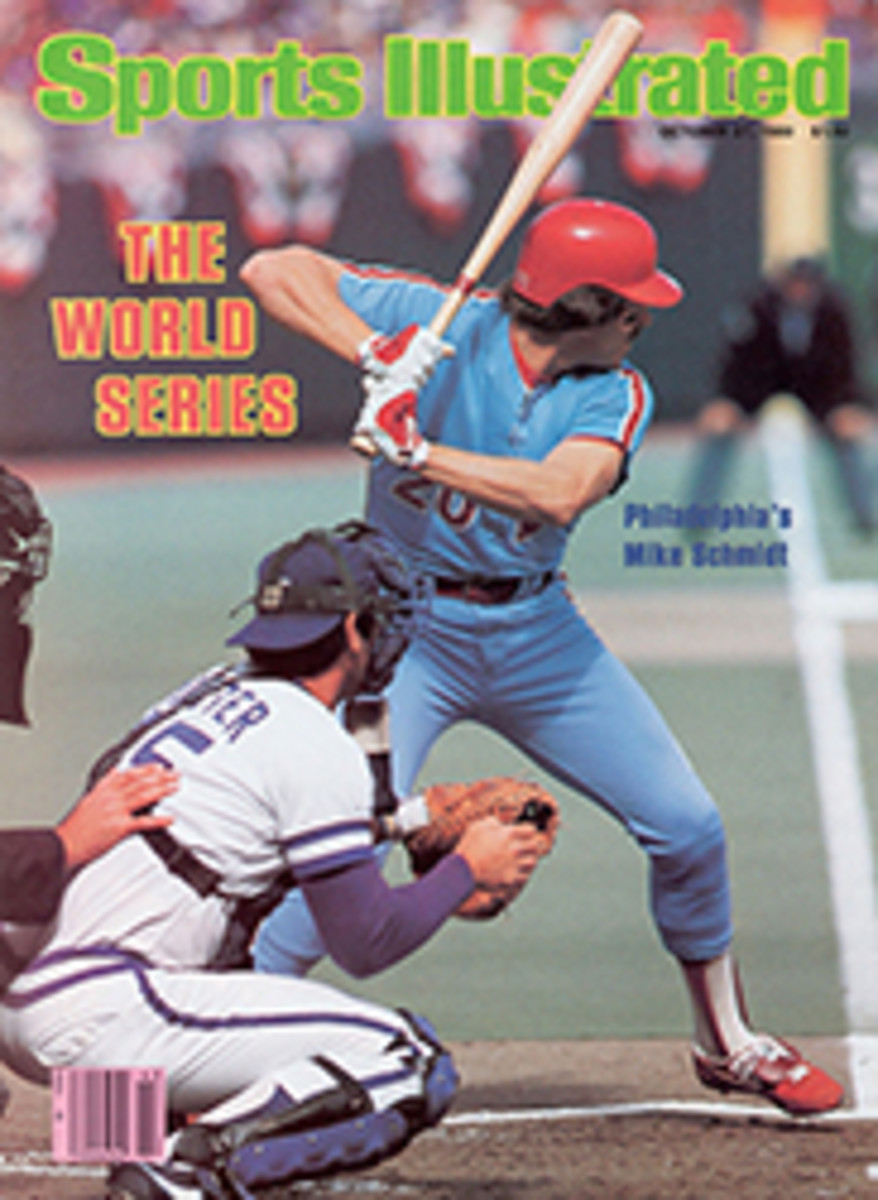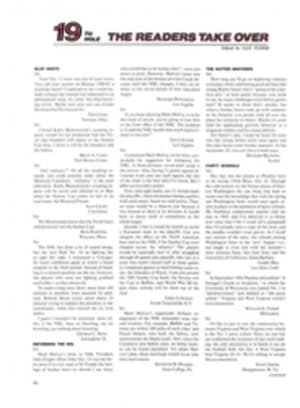
FOR BIRDERS, THE NEW PETERSON GUIDE IS A MIGHTY FINE FEATHERED FRIEND
During the '40s, when I was growing up in New York City, I memorized the silhouettes of Stuka dive bombers and falcons and the batting average of every player in the American and National leagues. Among my heroes were miler Gil Dodds, ornithologist Roger Tory Peterson and New York Yankee Outfielder Charlie (King Kong) Keller. I had, as my youngest daughter now says, at least "fourples" in baseball cards of the heavy-browed Keller.
Years ago my mother quite sensibly threw out the shoe box crammed with the baseball cards, an irrevocable act that my brother and I periodically lament. No wonder we are known to our father as "the boys," though obviously we're both getting on.
But two treasured artifacts from that occasionally passionate childhood have survived. One is a dark brown Wilson baseball glove, with Streamlined Kurv Form fingers and Dick Wakefield's signature almost erased by an ancient history of caught and muffed balls and nervous fist poundings.
The other is a copy of Roger Tory Peterson's A Field Guide to the Birds, its corners rounded with use, its spine taped to hold it together. That familiar talismanic "Peterson," as it was called then and is called now, evokes all the bird-watching seasons and haunts of my youth: the blustery winter margins of the city, the sweet reek of summer marshes, leafy spring parks, a confusion of fall warblers high in the London plane trees, auks and bitterns, thrushes and black-poll warblers. I was 12 years old when I got the book and mad about birds.
One writer has called Peterson's guide "the most influential bird book of this century." And this June, in a White House ceremony, Peterson—with Ansel Adams, Beverly Sills, Admiral Hyman Rickover and others—was awarded the Medal of Freedom, the highest honor conferred upon civilians. Peterson's publisher, Houghton Mifflin, describes him as "the world's most honored naturalist," who helped start the environmental movement and even changed the migratory habits of some birds by indirectly encouraging winter feeding.
This fall, 33 years after the last revised edition, Peterson, now 72, has made a remarkable comeback. To cheers from this fan, he has published the "completely new" fourth edition of his famous guide, aka Peterson IV (hard-cover, $15; paperback, $9.95). It covers the 575 species that occur, some accidentally, in the U.S. and Canada east of the 100th meridian, which runs, roughly, along U.S. Route 83 down through the Dakotas and Kansas to Texas.
The Peterson System, which revolutionized field identification with realistic but schematic drawings, is still there in all its simplified glory. But Peterson has painted each of the species anew in 136 plates, redrawn in larger size, all illustrated in rich color in seasonal plumages. The species are shown mostly in profile and at rest. But where necessary, the plates depict birds in flight in both overhead and topside views, sometimes in the black-and-white pattern you would actually see looking up into the sky. Little arrows point to the key field marks—the white throat patch of the Canada goose or the eye-ring of the Connecticut warbler—for quick identification, with close-ups of a bill or a foot lobe if it's distinctive.
The drawings are often so lifelike that I half expected to see the marbled godwit fly off the page. There are also special poignancies, among them the small black-bordered illustrations of extinct species: great auk, passenger pigeon, Labrador duck and Carolina parakeet.
Peterson anticipates and answers the essential questions. What shape are the wings, bill and tail? How does the bird behave? Does it swim? How does it fly?
Similar species are grouped together, with the plates headed with such broad titles as Yellow Finches, Dark Herons, Pink and Red Waders. And in a major improvement, the text on each bird—somewhat trimmed, it seems, from earlier editions—has been placed on the page opposite the appropriate illustration. I well remember frantically flipping the pages of my Peterson II between drawing (mostly in black and white, alas) and description, seeking a sure identification while trying to keep some mysterious bird steady in my binoculars. I was always grateful when Peterson nailed down the identity of the bird in the glass before it flew away.
In another helpful addition, there are 390 new color range maps, showing where the birds should be during the seasons. Nomenclature has been updated, too. The Baltimore oriole is now also called the northern oriole. What would Earl Weaver say about that?
The distinction of Peterson lies not only in the drawings but also in the succinctness, accuracy and illuminating whimsy of the descriptions of the birds' appearance, voice, behavior and habitat.
Consider the following Peterson sampler. The oldsquaw is described as "talkative," its voice "a musical ow-owdle-ow, or owl-omelet." The reddish egret "when feeding, lurches about, acts drunk." A chimney swift is "like a cigar with wings." And the behavior of the airborne swift is pithily summed up: "Flight very rapid, 'twinkling.' sailing between spurts; wings often stiffly bowed."
The song of the chestnut-sided warbler sounds like "see see see see Miss Beech'er or please, please pleased to meet'cha, penultimate note accented, last note dropping." The Swainson's warbler is a "skulker, seldom seen," perhaps because its habitat is "swamps, bogs, stream bottoms, woodland brush" and rhododendron-hemlock tangles in the central Appalachians.
Anyone who has ever walked into deep woods and heard the song of the veery knows the tingling accuracy of Peterson's description: "liquid, breezy, ethereal; wheeling downward: vee-ur, vee-ur, veer, veer."
The publishing history of the Peterson guide is legendary. Brought out in 1934, in the depths of the Depression, it surprisingly sold out its first printing of 2,000 copies within the first week. The book has sold two million copies over the years, and a companion guide to Western birds has sold another million.
Houghton Mifflin ran off an enormous first printing of 350,000 copies of Peterson IV, equaling the house record of J.R.R. Tolkien's bestselling Silmarillion. With birders numbered in the millions, the publisher is understandably bullish on the bird-guide market. The three most popular guides—totaling five volumes among them—sell an estimated 700,000 copies annually.
"The aficionados, the birders, are buying multiple copies," chirps Tom Martin. Houghton Mifflin's sales manager, about Peterson IV. "Cloth for the shelf, paper in their backpacks. Bird people have been waiting for this. The word is fervor. It's like people who are interested in the Bible—they'll go out and buy a new translation."
For sentimental as well as objective reasons, I'm happy that Peterson has met the competition with his splendid revision. Several years ago, when I was sorting out wood storks and white ibis in the Everglades, it was with a distinct feeling of disloyalty that I used the Golden Press' fine Birds of North America because most of its illustrations are in color. With Peterson IV in the bookstores, Golden hopes to offer a new edition of its guide next year.
Now all I need to know is, whatever happened to Dick Wakefield?
SAMPLE ENTRIES: THE OLD...
BALTIMORE ORIOLE.
Icterus galbula.
P1. 54
Field marks:—7-8. Smaller than a Robin. Male:—Fiery orange and black. Female and young:—Olive above, yellow below, with two wing-bars. Some females are quite orange, with some black around, the head, thereby resembling males.
Similar species:—The male Redstart and the Blackburnian Warbler, the only other species with such intense orange, are both smaller than Sparrows. Females and young are very similar to the female Orchard Oriole, and are decidedly more orange-yellow. Female Orioles resemble female Tanagers in general coloration, but the latter birds show no wing-bars (except the accidental Western Tanager).
Voice:—Song, a series of rich, piping whistled notes. Note, a low whistled hew-li. Young birds just out of the nest give an incessant plaintive tee-deedee.
Range:—Breeds in groves and shade-trees (particularly elms) from Nova Scotia, Ontario, and s. Manitoba to n. Georgia, Louisiana, and s. Texas (absent on se. coastal plain); winters in Central America.
© 1947 Roger Tory Peterson
...AND THE NEW
"BALTIMORE" ORIOLE or NORTHERN ORIOLE (in part)
Icterus galbula (in part) 7-8" (18-20 cm)
M 336
Male: Flame-orange and black, with a solid-black head. Female and young: Olive-brown above, burnt orange-yellow below; 2 white wing bars. Some females may have traces of black on the head, suggesting the hood of the male.
Similar species: (1) See "Bullock's" Oriole (western). (2) ‚ôÄ Orchard Oriole is greener than ‚ôÄ "Baltimore." (3) See ‚ôÄ tanagers.
Voice: Song, rich, piping whistled notes. Note, a low, whistled hew-li. Young (when begging), a plaintive tee-deedee.
Range: Canada, e. and cen. U.S. Winters in American tropics. East: Map 336. Habitat: Open woods, elms, shade trees.
© 1980 Roger Tory Peterson

